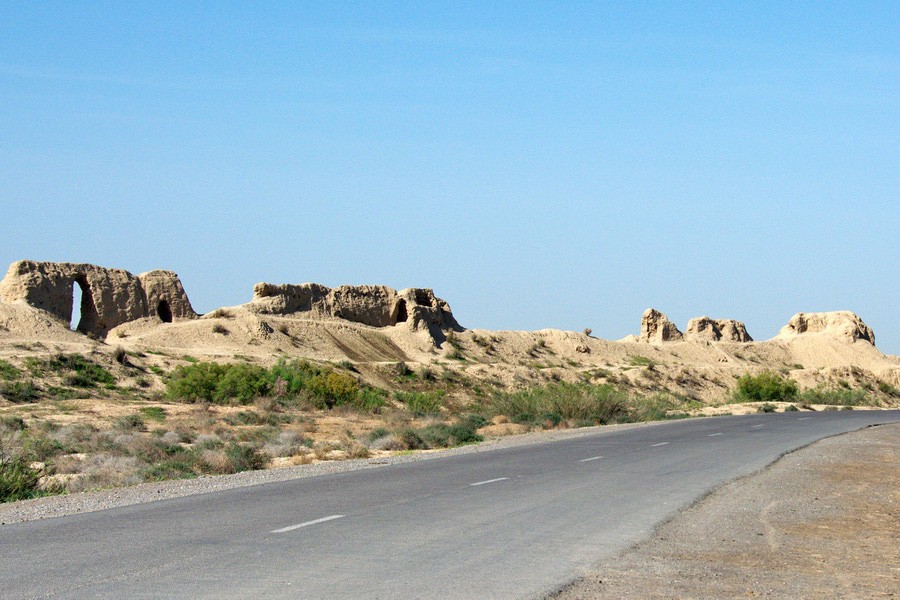Sultan Kala, Merv

Sultan Kala (Sultan Qala) was once the greatest fortress, surrounded by high walls and a moat, where many sultans reigned, and numerous great artists and brave warriors were nurtured.
In the 8th century, a revolt against the Umayyad Caliphate took place, leading to the rise of the Abbasid dynasty. Abu Muslim, the legendary leader of the Abbasid movement in Khorasan, relocated the government and the main bazaars from the flourishing Gyaur-Kala to a location near the Majan Canal. It was here that the grand fortress, later known as "the heart of Ancient Merv" and "the fortress of the sultans", Sultan Kala, emerged.
Today, visitors to the fortress can view the remnants of buildings, which scholars consider architectural marvels: the Great Kyz-Kala, the foundations of a vast palace complex, and the famed “medieval skyscraper”, the mausoleum of Sultan Sanjar.
In the 11th and 12th centuries, during the rule of the Great Seljuk dynasty, Merv became the state capital and was renamed Marw al-Shāhijān. It was during this period that Merv reached its peak of grandeur. In the late 11th century, Sultan Melik Shah (who ruled from 1072 to 1092) ordered the city to be enclosed by a fortress wall made of raw brick, along with a moat. To fulfill the ruler’s command, walls 10–12 meters high and 6 meters wide were built, featuring secret staircases and casemates. Around 200 semicircular towers, each 4 meters in diameter, were erected along the perimeter, enclosing an area of over 400 hectares. This fortress became known as Sultan-Kala.
A state or city reaches its height of prosperity when it fosters various aspects of culture, art, and craftsmanship. Ancient Merv flourished during the 40-year reign of Sultan Sanjar (1118–1157), the last ruler of the Great Seljuk dynasty. His tomb-mausoleum, which is the only surviving part of a larger complex that included a mosque and a palace, stands as a testament to this era.
Sultan Sanjar is also credited with the construction of another structure, the walled citadel of Shahriyar-ark, located in the northeastern corner of Sultan-Kala. The remains of several buildings, including the barracks, a dovecote, the ruler’s residence, and a council meeting hall, have survived to this day.
Sultan Sanjar was a generous patron of the arts, trade, and craftsmanship. He surrounded himself with talented individuals, including renowned poets such as Ali Auhadadein Enveri, Amid Kamali, Muizzi, and the poetess Mahisti. The Great Silk Road passed through Merv, connecting China to the Mediterranean, and trade relations were established with India, Khorezm, and various nomadic tribes.
In 1220, Merv was attacked by a Mongol army led by Tolui, the son of Genghis Khan. The city was destroyed and plundered in 1221, and Sultan-Kala was not revived until the 15th century. Although the Timurid dynasty restored the city's irrigation systems at that time, Merv never regained its former glory. Over time, the settlement relocated, and today the modern city of Mary in Turkmenistan stands in its place.
